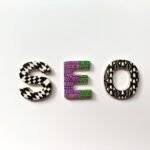Designing an Engaging Homepage for Maximum Impact
Creating an engaging homepage is fundamental for capturing the attention of visitors and enhancing their overall experience. A well-designed homepage not only showcases your latest blog posts but also serves as an efficient gateway for users to navigate through your content. One key element to consider is the layout design, which should be clean and intuitive. An attractive grid or card layout can effectively highlight your most recent or popular articles, inviting users to explore further.
Thumbnails play a crucial role in this context. Utilizing visually appealing thumbnails can significantly increase the click-through rate of your blog posts. It is important that these images are relevant to the content and are of high quality. Accompanying these visual elements with brief previews or enticing excerpts creates a sense of curiosity, encouraging visitors to read more about the topics that interest them.
A sticky header is another vital feature that enhances functionality. This navigation tool remains accessible as users scroll down the page, allowing them to easily access different sections of your blog without losing sight of your content. Furthermore, incorporating a toggle button and dropdown menus can facilitate user experience by presenting additional categories or sections in a neat manner, preventing the homepage from becoming cluttered.
To align your homepage design with search engine optimization (SEO) principles, ensure that your layout is mobile-responsive, as a significant portion of web traffic comes from mobile devices. Additionally, using appropriate alt text for images and logical heading structures will further improve the SEO performance of your site. By prioritizing both usability and visual appeal on your homepage, you create an engaging environment that entices visitors while also meeting the demands of search engines.
Implementing SEO Best Practices with AI Tools
To enhance a blog’s visibility, leveraging AI tools for implementing essential SEO practices is crucial. One of the primary steps in optimizing a blog involves identifying relevant keywords aligned with your niche. For instance, utilizing keywords such as ‘SEO tips’ and ‘AI tools for SEO’ can significantly improve your content’s discoverability. AI-powered keyword research tools can aid in uncovering high-traffic keywords, helping bloggers to strategically incorporate them into their articles.
Once you identify the target keywords, effectively integrating them into your blog content is vital. This includes placing keywords in titles, headings, and throughout the text while maintaining a natural flow. It’s essential to ensure that the keyword density is balanced, avoiding keyword stuffing which could negatively impact readability and SEO rankings.
Backlinks also play a vital role in SEO optimization. Obtaining backlinks from reputable websites can enhance your blog’s authority and improve its search engine ranking. AI tools can facilitate the process of backlink analysis, helping you identify potential partners for collaboration and outreach. Furthermore, crafting compelling meta descriptions is another area where AI can help. These descriptions can influence click-through rates, nudging potential readers to engage with your content over others.
Another key aspect is utilizing image alt tags, which assist search engines in understanding the context of images within your blog. AI image optimization tools can suggest appropriate alt text and ensure that images are optimized for speed, further enhancing user experience. By harnessing these AI innovations, bloggers can streamline their optimization process, allowing for a more efficient approach to enhancing their overall blog ranking.


